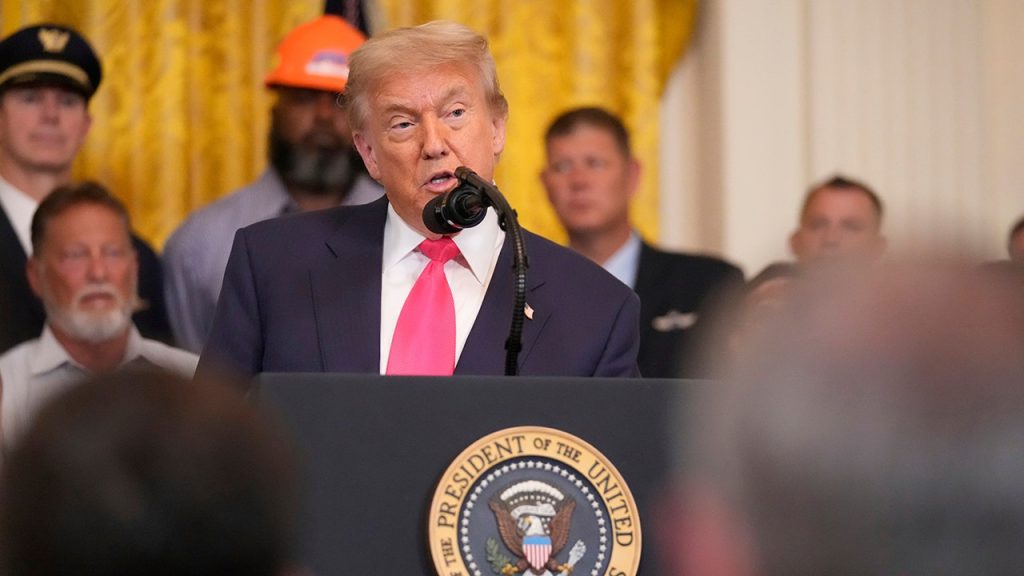In recent developments, Senate Republicans have successfully navigated a significant procedural challenge concerning President Donald Trump‘s aptly named “big, beautiful bill.” After prolonged negotiations that highlighted divisions within the party, the legislation gained crucial momentum with a narrow 51-49 vote. While nearly all Republican senators backed the bill, its eventual passage remains uncertain, particularly as Democrats prepare to impose a lengthy reading of the bill on the Senate floor.
As the stakes increase and tension mounts, discussions surrounding the bill encompass contentious issues such as Medicaid reforms and tax provisions. The intricate political landscape demands that parties remain vigilant as lawmakers face a decisive vote that could shape domestic policy for years to come.
| Article Subheadings |
|---|
| 1) Tense Negotiations Lead to Procedural Success |
| 2) Contentious Bill Faces Further Challenges |
| 3) Key Players and Their Influence |
| 4) Additional Amendments and Concerns Emerge |
| 5) Next Steps and Future Expectations |
Tense Negotiations Lead to Procedural Success
The recent Senate vote concerning President Trump‘s “big, beautiful bill” emerged from a backdrop of intense negotiations. The vote, which culminated in a 51-49 party line division, enabled the Republicans to unlock a prolonged 20-hour debate on the legislation. Senate Majority Leader John Thune of South Dakota presided over the efforts, where losing just three Republican votes was paramount for the passage of this legislative initiative. Despite the procedural success, the concern remained over whether all Republicans would support the final version of the bill, especially as it had undergone numerous changes leading up to the vote.
Contentious Bill Faces Further Challenges
Following this initial victory, the legislation’s future hangs in the balance due to ongoing dissent within the party ranks. Key issues involve potential impacts on Medicaid and adjustments to various provisions within the proposed budget. With a sizeable 940-page bill in contention, the process is further complicated by Senate Democrats’ commitment to enforcing a complete reading of the legislative document before advancing the debate. This requirement could prolong the discussion well into the night, leading to uncertainties regarding further negotiations and the timing of subsequent votes.
Key Players and Their Influence
Recognizing the significance of the vote, notable senators played critical roles in influencing the outcomes. Senator Ron Johnson of Wisconsin notably shifted his position from a “no” vote to a “yes,” showcasing the importance of aligning party members. The involvement of Vice President JD Vance was another notable factor; although he was prepared for a tie-breaking scenario, his primary contribution revolved around negotiation strategies rather than casting a decisive vote. Furthermore, figures such as Susan Collins and Rand Paul expressed their reservations, indicating that while procedural votes were crucial, their support for the final bill remained tentative and contingent on further changes.
Additional Amendments and Concerns Emerge
As the bill continues to navigate procedural obstacles, lawmakers are addressing lingering concerns surrounding provisions that may pose challenges to its viability. Among these concerns is the structure of the Medicaid provider tax rate, which remained largely consistent but faced delays in its implementation date. Similarly, the ongoing issues related to the state and local tax (SALT) deduction reflect significant points of contention that could threaten overall party unity. The incorporation of new provisions, such as a $25 billion rural hospital stabilization fund, aimed at appeasing moderates, raises further questions regarding whether this legislative strategy is sufficient to secure the loyalty of holdout senators.
Next Steps and Future Expectations
The approaching “vote-a-rama” presents senators with the opportunity to propose an extensive range of amendments to the bill, creating open challenges for the Republican leadership. The expectation is that this process of unlimited amendments could serve as a platform for heated debates, with Democrats aiming to exploit any weaknesses among Republican senators. Following this, lawmakers must reach a final vote on the adapted bill, which is expected to be sent back to the House of Representatives. The urgency of the situation is heightened by President Trump‘s desire to have this legislation signed by July 4, cementing its significance within his broader domestic agenda.
| No. | Key Points |
|---|---|
| 1 | Senate Republicans advanced President Trump’s bill through a narrow procedural vote. |
| 2 | The impending reading of the entire bill by Senate Democrats may extend the debate process significantly. |
| 3 | Key senators shifted their positions during negotiations, affecting the overall party strategy. |
| 4 | Concerns over Medicaid funding and tax provisions continue to loom over the legislation’s support. |
| 5 | The upcoming “vote-a-rama” provides an opportunity for amendments that could impact the bill’s fate. |
Summary
The passage of the procedural hurdle marks a significant step for Republicans in advancing President Trump’s “big, beautiful bill,” but it also highlights the fractures within the party as they face internal dissent and external challenges. With critical amendments pending and the bill’s future uncertain, the next phases will be decisive in determining its final shape and eventual approval. The complex political dynamics make it crucial for party leaders to navigate these challenges effectively to ensure that the proposed legislation aligns with both party and voter expectations.
Frequently Asked Questions
Question: What are the main components of the “big, beautiful bill”?
The bill encompasses wide-ranging policy initiatives, primarily targeting Medicaid reforms and tax adjustments, although details are evolving through ongoing negotiations.
Question: Why did some Republican senators vote against the bill?
Concerns over specific provisions, such as changes to Medicaid and taxation policies, led certain senators to withhold their support, reflecting broader intra-party divisions.
Question: What are the implications of the upcoming “vote-a-rama”?
The “vote-a-rama” will allow senators to propose numerous amendments to the bill, serving as a critical testing ground for party unity as both sides maneuver to influence the legislative outcome.


